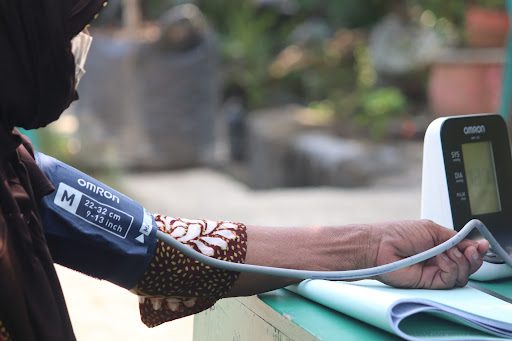The human body is a complex organism influenced by lifestyle, diet, exercise, emotional state, and environment. Medical professionals check four main vital signs to evaluate our physical health – body temperature, pulse rate, respiration rate, and blood pressure. Each provides a measurement of an essential bodily function. Vital sign measurements provide critical information about our state of health, both in the immediate term, during a medical emergency, or as an indicator of chronic disease/condition. The ranges for each measurement vary depending on your age, sex, level of physical wellness, and known medical problems.

This four-part vital signs series begins with an explanation of blood pressure. Stanford University describes blood pressure as measuring how much force is applied to your blood vessels when your heart pumps blood through your body.
Blood pressure measurements are composed of two readings: the maximum pressure when your heart contracts and the minimum pressure when your heart is at rest. Normal resting blood pressure is considered 120/80 (systolic/diastolic), recorded in millimeters of mercury (mm Hg). High blood pressure (hypertension) occurs when a resting systolic pressure exceeds 140 and or a resting diastolic pressure exceeds 90. Hypertension can have little or no symptoms and needs to be taken seriously. If you imagine your heart, arteries, and blood vessels as simple pipes, exerting higher pressure on the pipe walls over decades will wear them out quicker. Ideally, we want our pipes to last as long as possible, so we should treat high blood pressure with the importance it deserves. Conversely, low blood pressure (hypotension) can be a sudden drop in blood pressure or one that is consistently below the normal range. Both hypertension and hypotension should be treated under the care of a medical professional.

Blood pressure can be easily measured at home using a digital blood pressure monitor on a bare upper arm or wrist. Follow the manufacturer’s instructions for device operation. Blood pressure can also be measured using an aneroid monitor with a dial gauge combined with utilizing a stethoscope. Blood pressure can vary widely and should ideally be monitored over days or weeks to obtain an average reading. Patients that get anxious about going to the doctor can demonstrate “white coat syndrome” and display falsely elevated blood pressure. A healthy diet and exercise are effective ways to maintain healthy blood pressure. As always, consult your doctor about any concerns or changes that you plan to make to your lifestyle. Here’s to your health!





